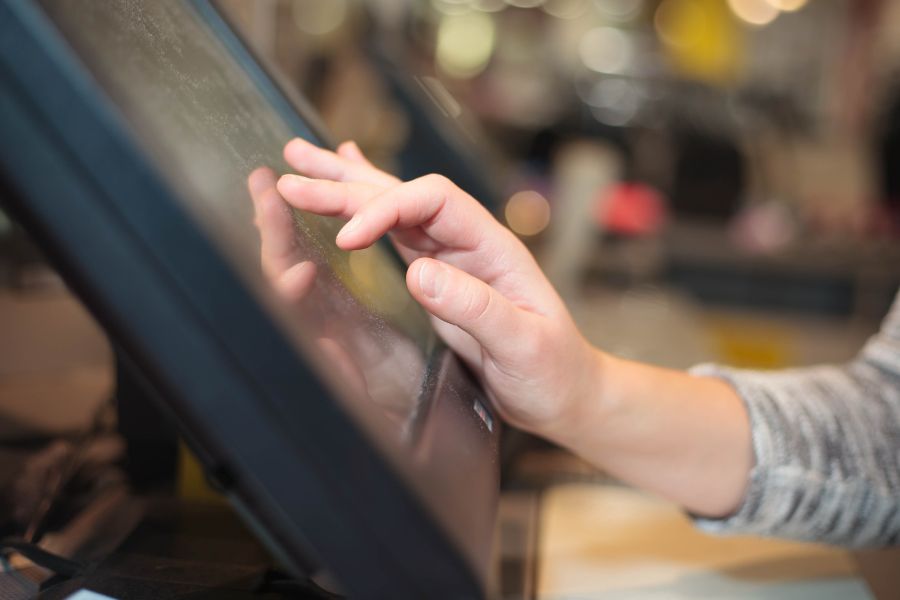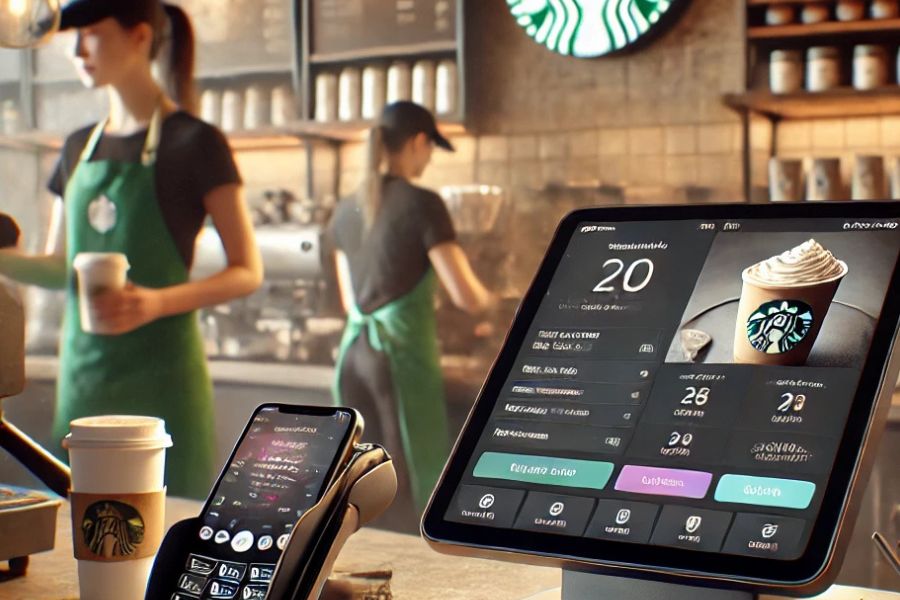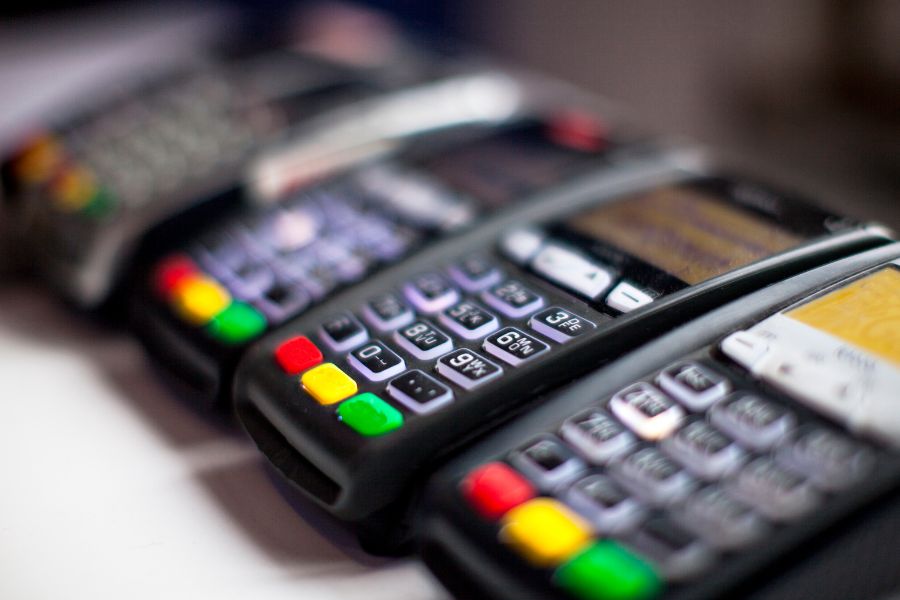An effective POS (Point of Sale) system is the backbone of any retail business, handling everything from sales to inventory and customer management. But here’s the catch—not all POS systems are the same. Different types of POS systems cater to different needs, and picking the right one can make all the difference in your store’s performance. In this guide, we’ll explore the 5 main types of POS systems that retailers are using today, so you can find the perfect fit for your business and keep things running smoothly.
What is a POS (Point of Sale) System?
1. Definition and Role of a POS System
A POS (Point of Sale) system is the central hub of any retail operation.
At its core, it handles the essential task of processing transactions, but it doesn’t stop there. A well-designed POS system also manages inventory, tracks sales, and generates real-time reports that give retailers valuable insights into their business performance.
In short, it’s the system that keeps everything running smoothly, from the moment a customer makes a purchase to the back-end operations that keep stock levels in check.
2. How POS Systems Have Evolved
POS systems have come a long way from the days of clunky cash registers.
Today, they’re sleek, tech-driven platforms that do more than just handle payments. Modern POS systems are cloud-based, allowing retailers to access data from anywhere and sync across multiple locations in real-time. With mobile compatibility, retailers can now process transactions on the go, whether in-store, at pop-up shops, or even at events. This evolution has made POS systems more agile, scalable, and user-friendly.
A reliable POS system can transform your business. It improves the customer experience by making transactions quicker and more accurate while enabling personalized service. For retailers, it simplifies operations by automating tasks like inventory management and sales reporting. Ultimately, a solid POS system drives business growth by providing the data and efficiency needed to make smarter decisions and keep customers coming back.
5 Main Types of POS Systems
Different types of POS systems offer unique features and benefits, catering to various retail environments. Let’s take a look at the most common options available today.
Desktop POS System
A desktop POS system is the traditional setup found in many brick-and-mortar stores. It’s typically fixed at a checkout counter and offers a full suite of features to manage transactions and operations.
- Common Features: Desktop POS systems often include robust inventory management, integrated payment processing, detailed sales reporting, and employee management tools. These systems are powerful enough to handle high transaction volumes.
- Best For: Ideal for high-volume retailers or businesses with centralized checkouts. Think of supermarkets, department stores, or large retail chains that need comprehensive reporting and inventory tracking.
Mobile POS System (mPOS)
For retailers who need flexibility, a mobile POS system is a great solution. mPOS systems can be operated on smartphones or handheld devices, making them portable and convenient.
- Common Features: These systems usually come with basic inventory tracking, integrated card readers, and mobile payment options. They’re small, easy to set up, and perfect for on-the-go sales.
- Best For: Perfect for small retailers, pop-up shops, food trucks, or event vendors who need a portable solution without a fixed checkout counter. It’s also a great option for businesses with limited space.
Tablet POS System
A tablet POS system offers a nice balance between mobility and functionality. With a touchscreen interface and the ability to move around, it’s ideal for customer-facing environments that need more flexibility.
- Common Features: These systems typically include inventory management, integrated payment processing, and a user-friendly touchscreen interface. They often offer more advanced features than mPOS but retain the same portability.
- Best For: Ideal for retailers who need to move around the store, such as boutique shops or restaurants. It’s also useful for businesses that want a sleek, modern setup without a bulky register.
Self-Service Kiosk POS System
A self-service kiosk POS is exactly what it sounds like—customers can manage their own checkout process. This type of system has become popular in large stores and fast-food chains where reducing wait times is crucial.
- Common Features: These kiosks are fully customer-facing, offering an easy-to-use interface for processing transactions independently. They reduce the need for staff at checkout while providing a seamless, automated experience.
- Best For: Retailers looking to reduce staffing costs and improve checkout efficiency. Self-service kiosks are common in fast-food restaurants, large retail chains, and grocery stores.
Cloud-Based POS System
The latest and now is becoming an emerging trend—it would be a mistake if we didn’t mention Cloud-based POS. These systems operate entirely through the cloud, meaning retailers can manage their business from anywhere with an internet connection.
- Common Features: Real-time data syncing, remote access to reports, easy scalability, and integration with other cloud-based tools. Many cloud-based solutions also integrate seamlessly across multiple devices, whether desktop, tablet, or mobile.
- Best For: Ideal for businesses with multiple locations or retailers who need to access data remotely. It’s also a great option for those looking for scalability and flexibility without worrying about hardware limitations.
Steps to Choosing The Right POS System for Your Business
The meaning of selecting a suitable POS system is about finding the system that aligns with your unique business model and customer expectations. In case you’re new to this, here are the essential steps so you can make a choice that benefits both your operations and your customers.
Understand Your Business Size and Operational Needs
Start by assessing the scale of your business. Are you a small boutique, a growing retail chain, or a large-scale operation? Smaller stores or pop-up shops might thrive with mobile or tablet POS systems that offer flexibility and mobility.
On the other hand, larger retailers with multiple locations or high transaction volumes may find that a more robust desktop POS system is essential for handling complex reporting and inventory management. The system should fit seamlessly into your everyday operations, not the other way around.
Focus on Customer Experience
Your POS system plays a big role in shaping customer interactions. Think about the kind of shopping experience you want to provide. Do your customers prefer the speed and convenience of self-service kiosks, or do they value a more personalized, face-to-face transaction?
Choosing a POS system that aligns with these preferences can improve satisfaction and keep customers coming back. For example, a mobile POS could allow your staff to assist customers on the sales floor, while self-service options can speed up checkout times in larger stores.
Look for Seamless Integration with Other Business Tools
Your POS system shouldn’t operate in a silo. It should connect effortlessly with other critical tools, like your inventory management system, CRM, accounting software, and e-commerce platform. This integration creates for a more streamlined operation, where everything—from stock levels to customer data—syncs automatically.
The result? A unified system that saves you time, reduces errors, and provides insights across all areas of your business.
Think About Budget and Scalability
While the initial cost of a POS system is important, don’t overlook the long-term expenses. Consider ongoing fees for software updates, maintenance, and support.
More importantly, think about whether the system can scale as your business grows. A POS system that works for a single location now may not meet your needs a few years down the line if you expand to multiple stores. Choose a solution that can grow with you, so you don’t find yourself needing to replace the system down the road.
ConnectPOS is a cloud-based POS system known for its high level of customization, making it a powerful solution for retailers across all industries—even those with niche requirements. Its flexibility goes beyond just basic features; businesses can tailor everything from the user interface to transaction workflows, adapting the system to their unique operational needs. With seamless integrations to platforms like Shopify, Magento, and WooCommerce, ConnectPOS effortlessly scales alongside your business. Real-time synchronization keeps inventory and sales data accurate across multiple locations, helping retailers stay agile in fast-paced environments. Whether you’re managing one store or many, ConnectPOS gives you the tools to create a POS system that truly fits your business.
New POS Trends to Watch for
As technology advances, so do the capabilities of POS systems. Staying on top of emerging trends can help retailers make smarter decisions and remain competitive.
1. Cloud-Based POS Systems
Cloud-based POS systems are quickly becoming the norm due to their ability to provide real-time data access and remote management. These systems allow retailers to monitor inventory, sales, and customer data from any device, without being tied to a physical location. Cloud solutions also make it easier to scale, as businesses can add new stores or locations without the hassle of installing hardware at each site. The flexibility and low upfront costs make cloud-based systems an attractive choice for retailers looking to stay agile.
2. Omnichannel Integration
Customers these expect a seamless experience across all shopping platforms – in-store, online, or through social media. Omnichannel POS systems are designed to unify these channels, allowing retailers to manage inventory, customer profiles, and sales data across all touchpoints in real time. This integration not only improves the customer experience but also gives businesses a better overview of their operations, making it easier to track sales and manage stock across physical and digital stores.
3. AI-Driven Insights
Artificial intelligence is changing the way businesses use their POS systems. Modern POS solutions are incorporating AI to analyze purchasing patterns, predict trends, and optimize inventory management. By leveraging data, AI helps retailers provide personalized product recommendations, optimize stock levels to reduce waste, and even automate reordering. As AI continues to evolve, it’s becoming a key tool for retailers looking to enhance both operational efficiency and customer engagement.
Conclusion
While some types of POS systems may seem more advanced or feature-rich, the real key is finding the one that best matches your business needs. Each system—whether desktop, mobile, tablet, or self-service—offers distinct advantages depending on the size and nature of your retail operation. It’s not just about having the latest technology, but about choosing a solution that enhances both your workflow and customer experience. In the end, the right type of POS system will help streamline operations, improve customer satisfaction, and support your business as it grows.
To find the perfect POS system tailored to your business, reach out to ConnectPOS today and explore how our customizable solutions can drive your retail success.
ConnectPOS is a all-in-one point of sale solution tailored to meet your eCommerce POS needs, streamline business operations, boost sales, and enhance customer experience in diverse industries. We offer custom POS with features, pricing, and plans to suit your unique business requirements.




